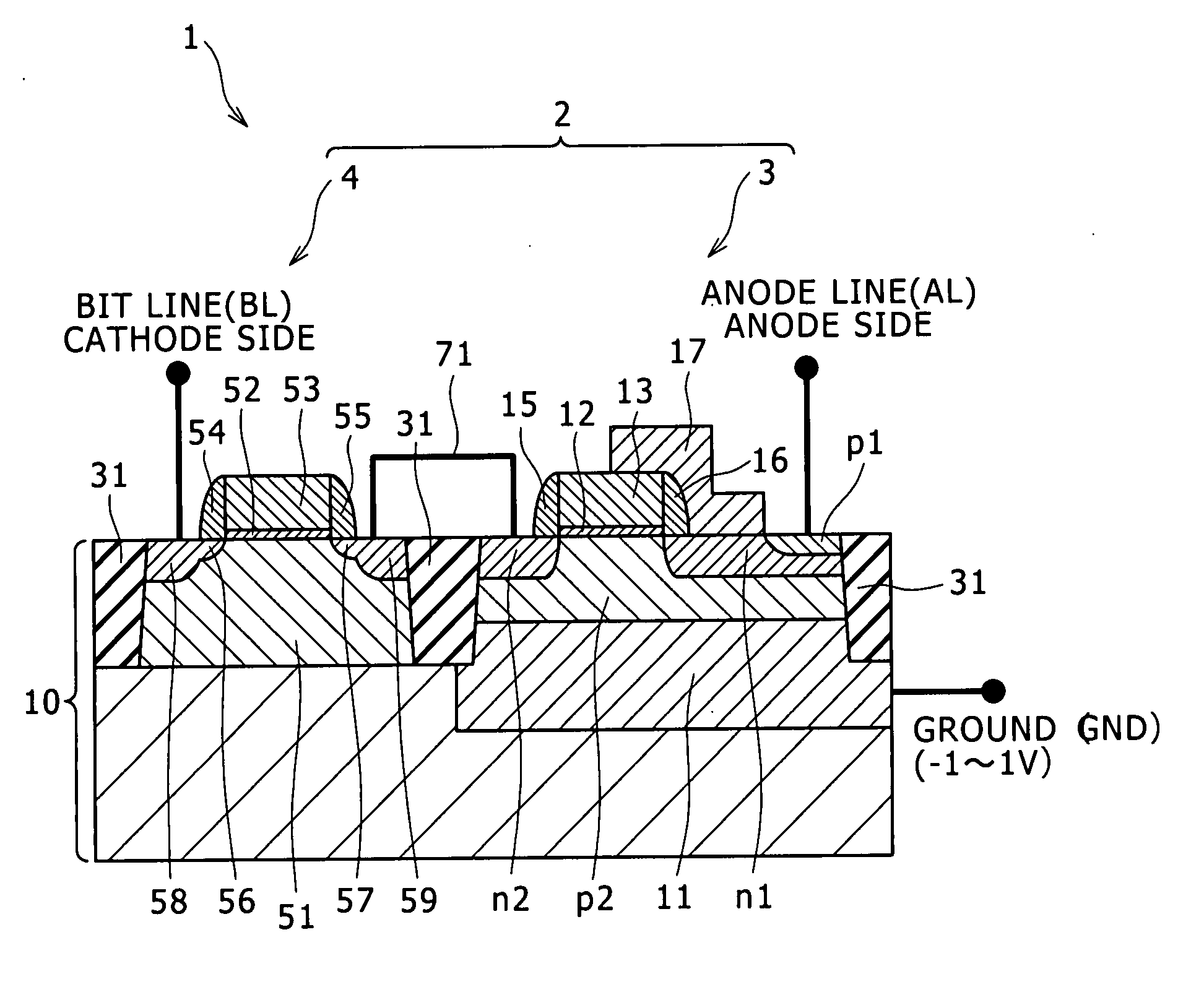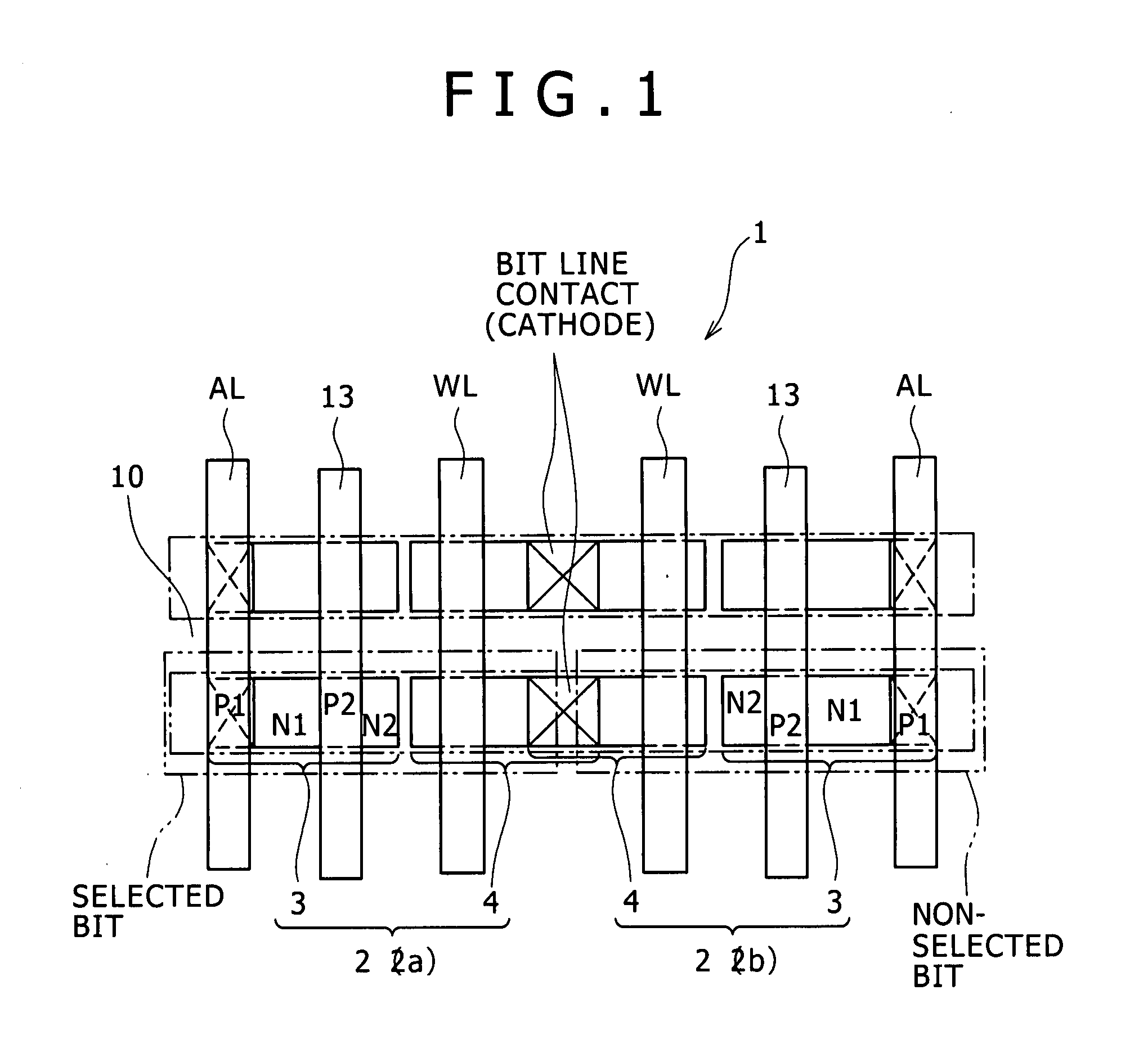Semiconductor device and driving method therefor
- Summary
- Abstract
- Description
- Claims
- Application Information
AI Technical Summary
Benefits of technology
Problems solved by technology
Method used
Image
Examples
first embodiment
[0051]Now, the semiconductor device 1 of the first embodiment configured such that a gate electrode 13 of a thyristor and a word line WL (gate electrode 53) of a field effect transistor extend perpendicularly to a bit line BL on the layout is described with reference to FIGS. 1, 2 and 3.
[0052]Referring to FIG. 1, such storage elements 2 as described hereinabove with reference to FIG. 2 are arrayed, for example, in a matrix on the bulk semiconductor substrate 10. It is to be noted that the following description is given under the assumption that one (2a) of two storage elements 2 on the same bit line BL corresponds to a selected bit and the other storage element 2 (2b) corresponds to a non-selected bit.
[0053]Referring to FIGS. 1 to 3, in order to turn off (WRITE 0) the selected bit of the semiconductor device 1, a first voltage is applied to the first p-type region p1 side of the thyristor 3 of the selected storage element 2 (selected bit) from between the storage elements 2 while a ...
second embodiment
[0057]Now, another semiconductor device 1 (1b) as the present invention which is configured such that a gate electrode 13 of a thyristor and a word line WL (gate electrode 53) of a field effect transistor extend perpendicularly to an anode line (not shown) on the layout is described with reference to FIGS. 2, 4 and 5.
[0058]Referring to FIG. 4, such storage elements2 as described hereinabove with reference to FIG. 2 are arrayed, for example, in a matrix on the bulk semiconductor substrate 10. The following description is given under the assumption that one of two storage elements 2 on the same bit line BL corresponds to a selected bit and the other storage element 2 corresponds to a non-selected bit.
[0059]Referring to FIGS. 2, 4 and 5, in order to perform a turning off operation (WRITE 0) of the selected bit of the semiconductor device 5, a first voltage is applied to the first p-type region p1 side of the thyristor 3 of the selected storage element 2 (selected bit) from between the ...
PUM
 Login to View More
Login to View More Abstract
Description
Claims
Application Information
 Login to View More
Login to View More - R&D
- Intellectual Property
- Life Sciences
- Materials
- Tech Scout
- Unparalleled Data Quality
- Higher Quality Content
- 60% Fewer Hallucinations
Browse by: Latest US Patents, China's latest patents, Technical Efficacy Thesaurus, Application Domain, Technology Topic, Popular Technical Reports.
© 2025 PatSnap. All rights reserved.Legal|Privacy policy|Modern Slavery Act Transparency Statement|Sitemap|About US| Contact US: help@patsnap.com



